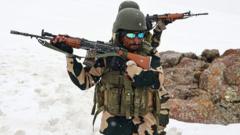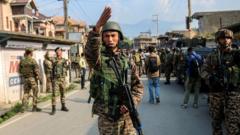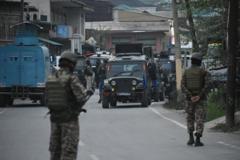In the face of rising tensions between India and Pakistan, both nations are redefining their military partnerships, with significant implications for regional stability. As tensions escalated following a recent terrorist attack in Kashmir, both nations are recalibrating their defense strategies, particularly in terms of arms procurement.
### Shifting Alliances: The Evolving Military Relationships of India and Pakistan

### Shifting Alliances: The Evolving Military Relationships of India and Pakistan
As India turns towards Western allies for military support, Pakistan's reliance on China underscores the changing dynamics in South Asia.
Historically, India maintained a strong connection with Russia, which served as its primary source of military equipment. However, recent trends indicate a significant transition; India's defense acquisitions are increasingly skewed towards Western allies, particularly the United States and France. In stark contrast, Pakistan's military dependence has shifted predominantly towards China, as the nation seeks to bolster its military capabilities amid diminishing support from the U.S.
This realignment reflects broader geopolitical shifts. The U.S. is investing resources and support in India's military as part of a strategic effort to counterbalance China's growing influence in the region. Conversely, Pakistan has turned to China to procure military equipment as it navigates its own reduced relevance in U.S. foreign policy post-Afghanistan.
Amidst these shifting relationships, the prospect of armed conflict remains real. The specter of nuclear confrontation looms over any skirmishes, reminiscent of earlier standoffs. As both nations adapt to new global currents in military support, the intricate balance of power in South Asia continues to evolve, potentially leading to increased tensions and instability.
---
This adjusted framework of alliances introduces a complex layer of international relations, wherein military cooperation not only reflects but actively shapes diplomatic dynamics in the region.
This realignment reflects broader geopolitical shifts. The U.S. is investing resources and support in India's military as part of a strategic effort to counterbalance China's growing influence in the region. Conversely, Pakistan has turned to China to procure military equipment as it navigates its own reduced relevance in U.S. foreign policy post-Afghanistan.
Amidst these shifting relationships, the prospect of armed conflict remains real. The specter of nuclear confrontation looms over any skirmishes, reminiscent of earlier standoffs. As both nations adapt to new global currents in military support, the intricate balance of power in South Asia continues to evolve, potentially leading to increased tensions and instability.
---
This adjusted framework of alliances introduces a complex layer of international relations, wherein military cooperation not only reflects but actively shapes diplomatic dynamics in the region.






















